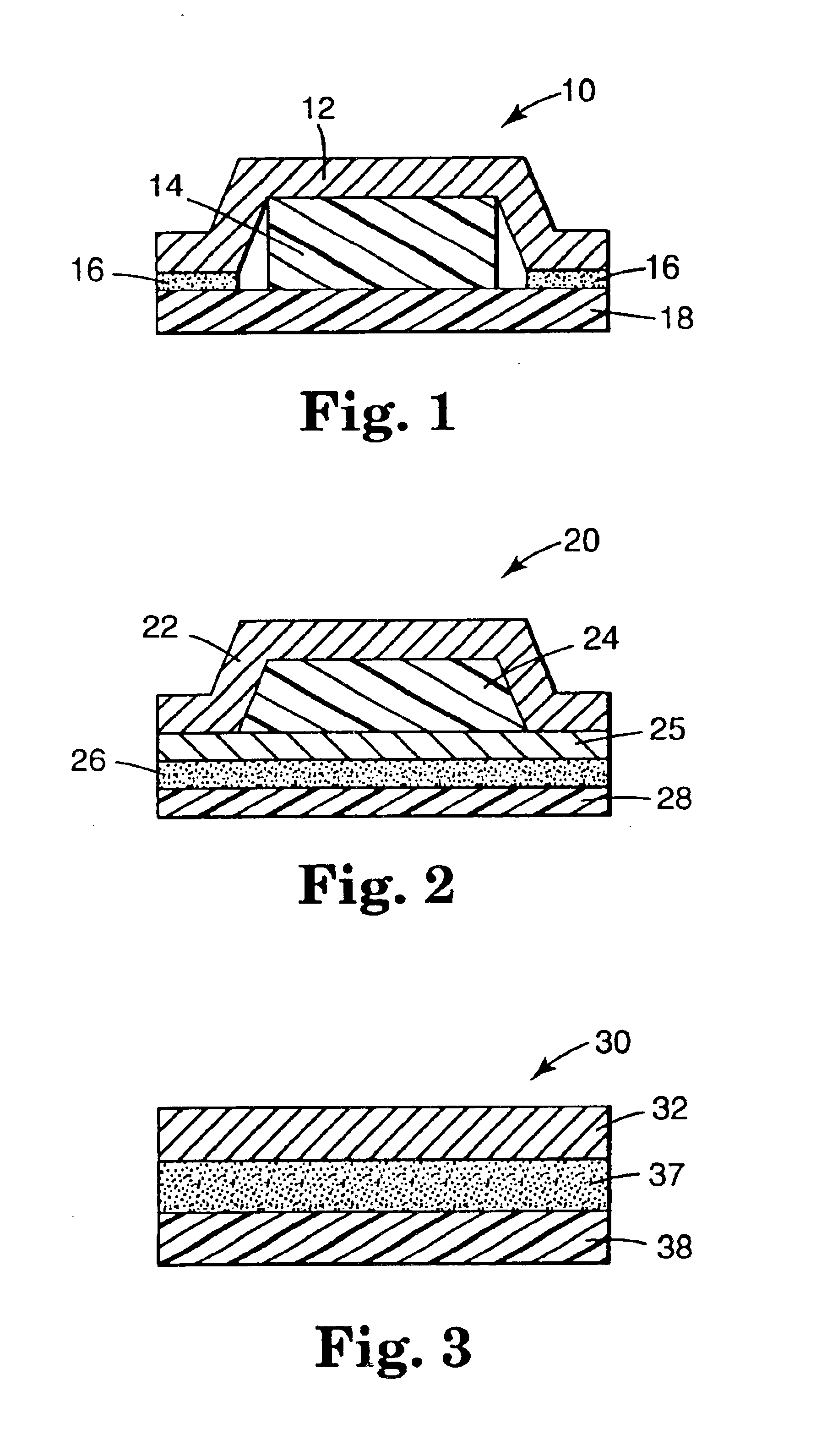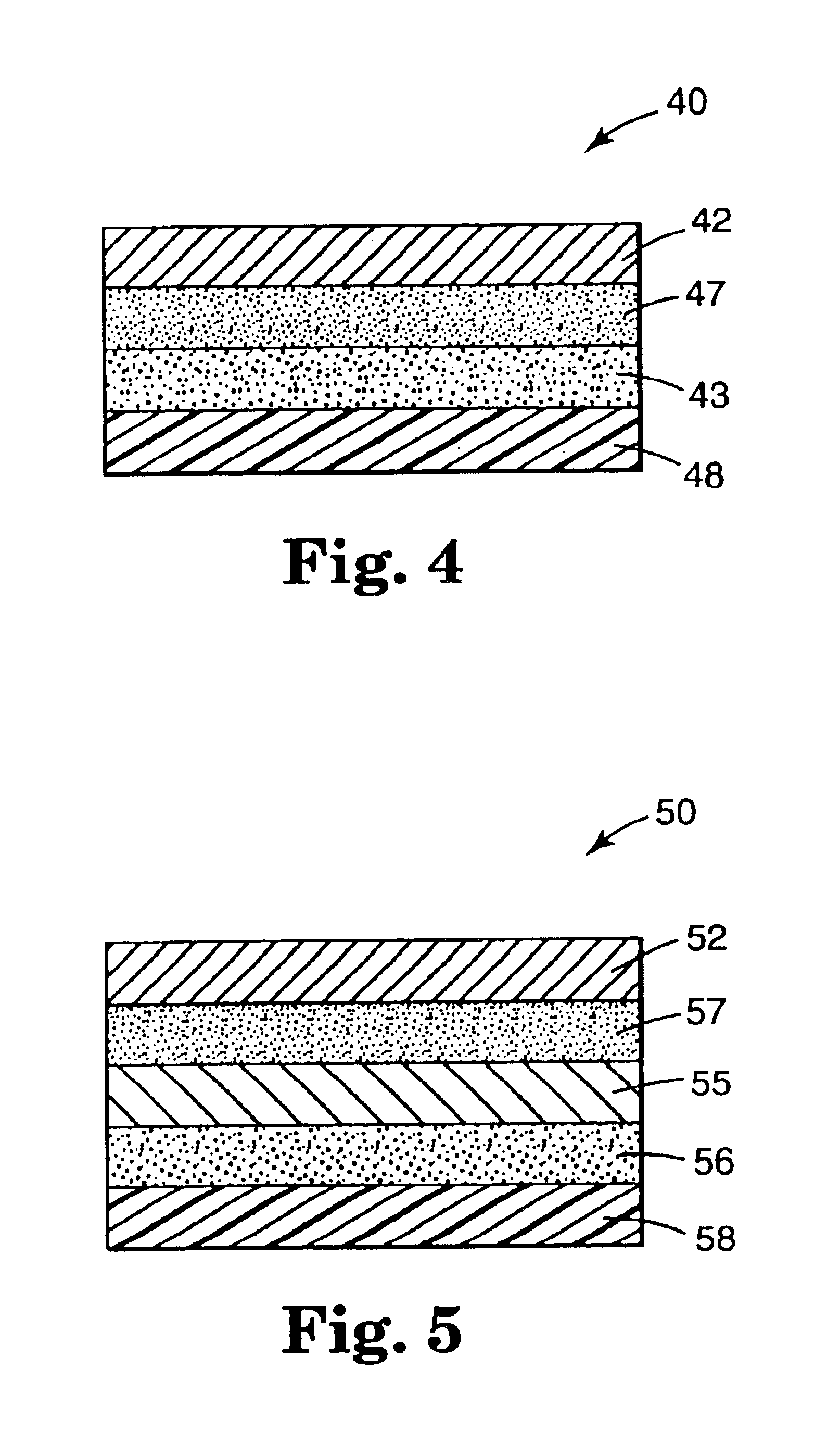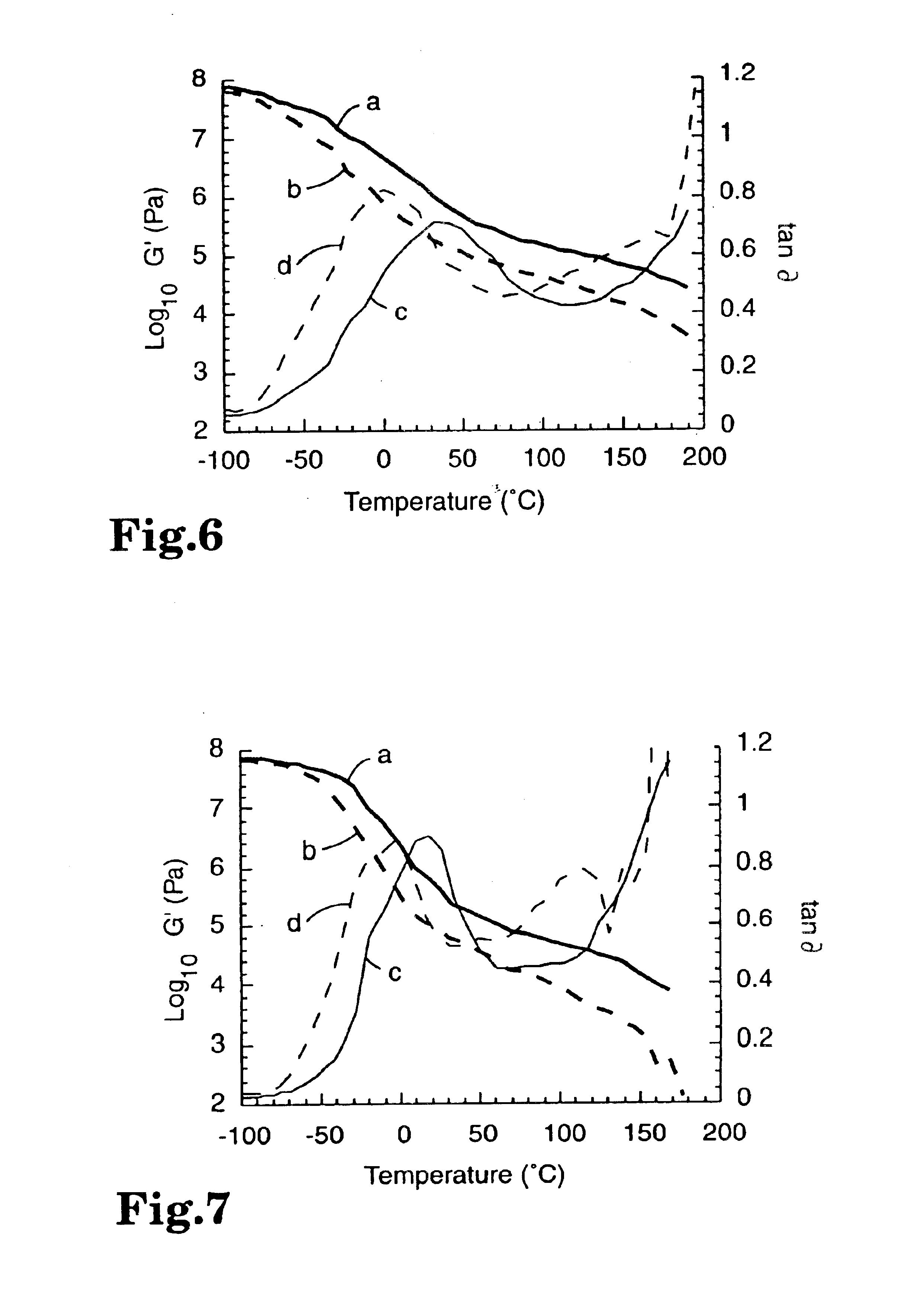Polymer mixtures containing polydiorganosiloxane urea-containing components
- Summary
- Abstract
- Description
- Claims
- Application Information
AI Technical Summary
Benefits of technology
Problems solved by technology
Method used
Image
Examples
examples
In the following Examples, all diisocyanates were used as received and the diisocyanate:diamine ratios were calculated using the diisocyanate molecular weight reported by the diisocyanate supplier and the diamine molecular weight as determined by acid titration. In the Examples all parts and percentages are by weight unless otherwise indicated. All polydiorganosiloxane diamines were made in a manner similar to that disclosed in U.S. Pat. No. 5,512,650 with various molecular weights. All molecular weights reported are number average molecular weights in grams / mole.
examples 8-12
The tackified films of Examples 8-12 contained tackified polydiorganosiloxane urea containing components having various molecular weights and thermoplastic components.
The tackified film of Example 8 was produced in a manner similar to that of Example 6, except a different organic polymer, different flow rates and processing conditions were used. Organic polymer ENGAGE™ 8200 (commercially available from Dow Chemical Co, Midland, Mich.) was used instead of KRATON™ 1107 and was added at a rate of 15.0 g / min. The tackifying material SR1000, the polydiorganosiloxane diamine and the methylenedicyclohexylene-4,4′-diisocyanate were added at a rate of 30.0 g / min, 30.0 g / min and 0.172 g / min, respectively. The extruder screws rotated at 120 revolutions per minute. Only a 50 μm thick tackified film layer on a polyester substrate was made.
In Example 9, a tackified film was prepared as in Example 8 except the SR1000 and polydiorganosiloxane diamine were each fed at a rate of 17.5 g / min, the methy...
example 13
A natural rubber-based pressure sensitive adhesive system was preared by mixing 35.2 parts by weight CV 60 rubber (a natural rubber from Goodyear Chemical, Akron, Ohio), 35.2 parts Escorez™ 1304 (Exxon Chemical Corp., Houston, Tex.), 28.8 parts SYNPOL™ 1011A (Ameripol Synpol), and 0.7 parts IRGANOX™ 1010 (Ciba-Geigy, Hawthorne, N.Y.). The tackified polydimethylsiloxane urea of Comparative Example 5 was dry blended with the natural rubber-based adhesive at a ratio of 90 parts by weight tackified polydimethylsiloxane urea to 10 parts by weight of the natural rubber adhesive. In a manner similar to Comparative Example 6, this tackified blend was then fed into zone 8 of a twin screw extruder and coated onto a polyester backing. Pressure sensitive adhesive testing results are displayed in Table 4.
PUM
| Property | Measurement | Unit |
|---|---|---|
| Fraction | aaaaa | aaaaa |
| Percent by mass | aaaaa | aaaaa |
| Fraction | aaaaa | aaaaa |
Abstract
Description
Claims
Application Information
 Login to View More
Login to View More - R&D
- Intellectual Property
- Life Sciences
- Materials
- Tech Scout
- Unparalleled Data Quality
- Higher Quality Content
- 60% Fewer Hallucinations
Browse by: Latest US Patents, China's latest patents, Technical Efficacy Thesaurus, Application Domain, Technology Topic, Popular Technical Reports.
© 2025 PatSnap. All rights reserved.Legal|Privacy policy|Modern Slavery Act Transparency Statement|Sitemap|About US| Contact US: help@patsnap.com



